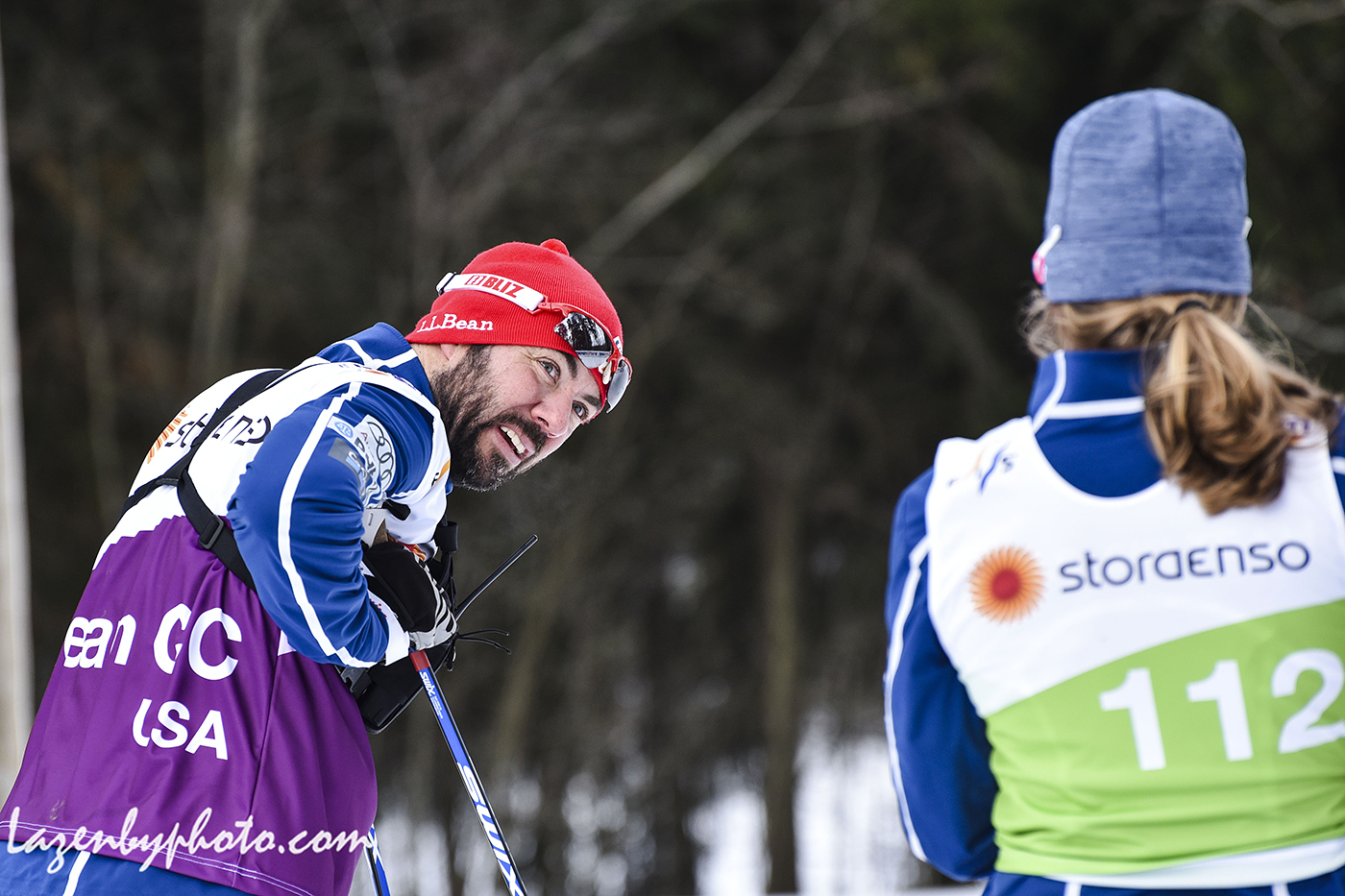
This week’s featured articles are made possible thanks to the generous support of The Loppet Foundation, host of the Masters World Cup 2018. Registration opens in October.
***
RIDING IN A PISTENBULLY ON EAGLE GLACIER, in the Chugach Mountains above Girdwood, Alaska — If you want to find the essence of Erik Flora, the longtime coach of the Alaska Pacific University (APU) ski team, you need to come here.
You need to fly to Anchorage. You need to drive 45 minutes down Turnagain Arm to the small resort town of Girdwood. You need to bump over dirt back roads to the Girdwood “airport,” a dirt airstrip surrounded by wildflowers on the ground and glaciated peaks above. You need to make your way inside the Alpine Air hangar, past the curious tourists overdressed for summer sunshine, and pay for your ticket. You need to absorb the safety briefing, climb into the A-Star, put on ear protection, and get ready for one of the most scenic helicopter flights of your life.
Within 10 minutes, you will go from sea level to 6,000 feet, from summer to winter, from coastal hemlock rainforest to high alpine zone. You will marvel as the helicopter pilot effortlessly sets the machine down on a landing pad smaller than a spare bedroom, a ridiculously narrow patch of firm ground amidst the sea of friable black rock. You may notice that there is a glacier 100 feet to one side of you, and a cliff edge 100 feet to the other. You may notice that the residential building in the middle is literally bolted to the rock to hold it in place.
Or you may just be wondering where the heck you are, and who would voluntarily spend several weeks each summer up here. And that is where you will find Erik Flora, a man squarely in his element: in a training environment of largely his own creation, shaped by a single-minded focus on helping American skiers to be the best in the world. Oh, and to become better people, help the community, and learn to coach themselves along the way. That’s all.
‘I was born in Nashville, Tennessee, which is kind of unusual for a cross-country skier’
But before Flora could make it to a glacier in the Chugach Mountains, he had to get out of Nashville first. His family moved when he was young, following his father’s work as a city planner. This took them to the suburbs of Portland, Ore., a pleasant place but also still an unlikely venue for a future cross-country ski coach.
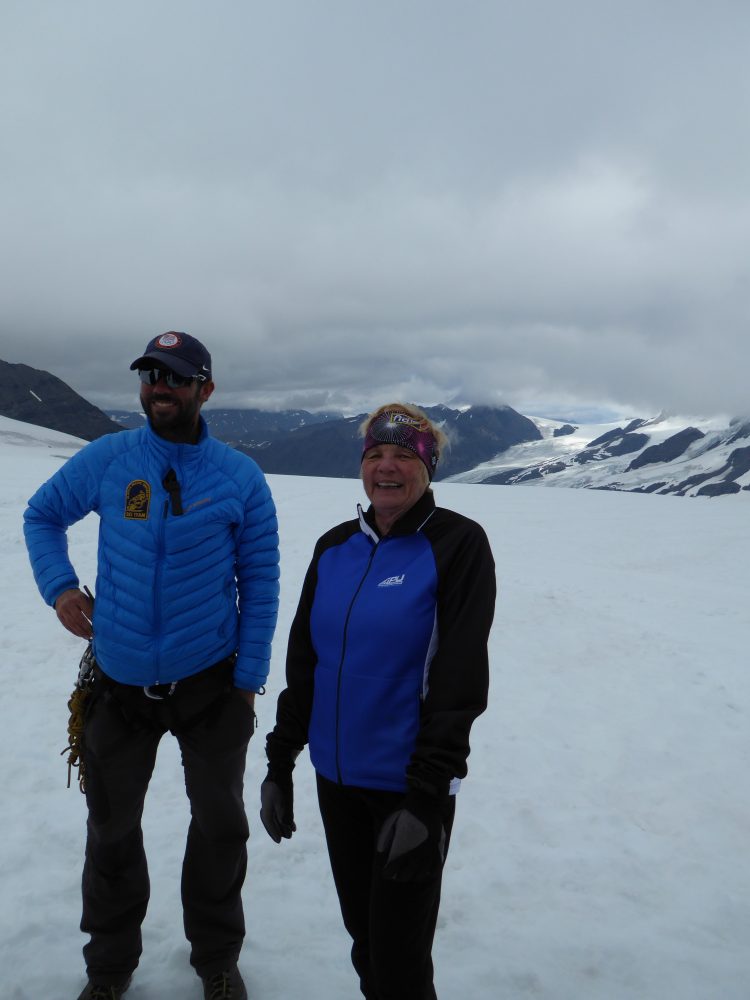
The Floras were members of the Oregon Nordic Club, and Erik frequently cross-country skied at Mt. Hood, the alpine resort (with a smaller nordic area) about 90 minutes driving and 4,500 vertical feet above Clackamas. Bend, Ore., and Snoqualmie Pass in Washington were other frequent weekend destinations.
The snow was plentiful but the drives were long, and by the time he was in high school Flora was realizing that Portland was not the optimal place for someone with long-term nordic aspirations. His plans crystallized at a Bend training camp in the summer after his sophomore year, featuring some logistical real talk from his coach.
“After doing some testing and skiing around” at the training camp, Flora recounted, his coach encouraged him to move to Bend. “Because in Portland you can only ski a couple times a week, and with my goals being what they were, to be a World Cup skier, then it had to be a little more than twice a week. And so I moved to Bend when I was 17, … and moved in with this coach. And my parents were still in Portland.”
(All direct quotes in this article come from an in-person interview with Erik Flora. The interview was conducted in the cab of a PistenBully on Eagle Glacier in July 2016 while Flora groomed from 10-11 p.m. for the next day’s skiing. Why so late? In part because of the need to groom in cooler temperatures to give the snow a chance to set up. And in part because, as Noah Hoffman noted following the 2014 Man Camp at Eagle Glacier, “Flora has nailed the grooming. (It helps that he never sleeps.)”)
Within a year, Erik’s parents, Sam and Berit Flora, had followed him to Bend. A period of athletic wanderlust and nomadism followed, as Flora fils “kind of bounced around to different places around the West.” There was a school year spent in Norway, too.
Throughout this time, Flora explains, he was “kind of figuring out more of what I wanted. I wanted a place where I could train at sea level, since when I was in Norway, that seemed to be something that most of the top racers in the world at that time came from sea-level locations. Some place that had a long winter and a ski community. And that was Anchorage.”
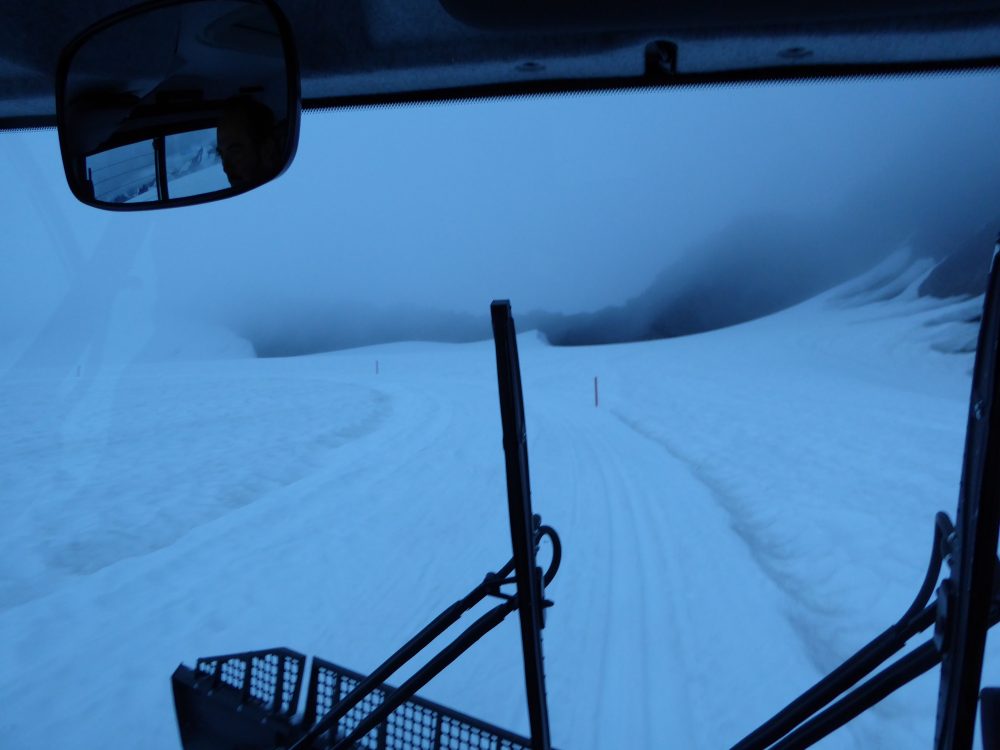
Flora contacted Bill Spencer, a former U.S. Ski Team member who was at the time the coach of the nordic team at the University of Alaska Anchorage (UAA). “And shortly after, I was driving my truck up the Alcan,” he recalled.
Flora’s Alaska origin story is familiar to the point of cliché among Alaska transplants: “My plan was to move to Anchorage, and stay for a year, and see how it was. I lived here a year, and pretty much decided at that point, I was probably going to be in Alaska forever.”
It didn’t hurt that Flora met his future wife, Gretchen Pfisterer (now Flora), in Anchorage around that time. Or at least started dating her then – they had met at World Junior Trials a few years earlier, when he was 18.
“And I remember the moment I actually saw Gretchen for the first time,” Flora, now 44, recalls 25 years later. “She was walking up to get her medals – she was a good ski racer, for sure. And I saw this girl walk up, blond hair, and thought, ‘Wow, that – that is something. OK.’”
The two of them skied on different teams for the next few years, before uniting on the UAA team in Anchorage when Erik Flora was around 20. (Pfisterer had grown up in Anchorage. She was the girls Anchorage Daily News Prep Athlete of the Year in 1989, an honor later awarded to future APU skiers Eric Strabel, Kikkan Randall, and Scott Patterson.) They began dating while both were at UAA, and “kind of figured out that Alaska” was going to be a good match for them, Erik now recalls.
Career as an athlete
That coach at the Bend summer camp was onto something. Flora found success at UAA, skiing to All-American status in 1994 and again in 1995. (His then-girlfriend, now-wife was no slouch either; Gretchen earned an All-American finish in 1992.)
Flora’s collegiate results put him on the national development radar for U.S. skiing, and exposed him to opportunities outside of Alaska.

As Flora diplomatically notes, this experience, while another step on the ladder, ultimately showed him that Anchorage felt like the best match for him and his skiing: “After being in Anchorage for a couple years, the USOC had a development program based out of Marquette, Michigan, that I joined. I moved out of Alaska for a year, lived in Marquette, and tried a different program. It was kind of a good next step. And after trying that, I realized that what I had experienced here in Anchorage was really along the lines of kind of how I wanted to develop my ski racing.”
Flora soon returned to Anchorage, this time for good. Three-time Olympian Jim Galanes had founded a program associated with Alaska Pacific University, Gold 2002, which was not shy about its aspirations. (The program would indeed send at least two Anchorage natives, Nina Kemppel and Kikkan Randall, to the Winter Olympics in Salt Lake City, though neither of them medalled. No American skier has yet won another Olympic medal in cross-country skiing since Bill Koch at Innsbruck in 1976.)
In the Gold 2002 program, Flora says, “instantly I found what I was looking for.”
Specifically, the team was the right match of coach, mindset, reliable snow, and a critical mass of athletes with unified goals. “I always knew that I wanted to be a ski racer,” Flora now recalls, “and the key was to find where I could make that happen. And … a lot of the places I lived, whether it was in Portland, where we didn’t have enough skiing, or some of the other places, in the early days, there wasn’t a team to work with – and that’s what I found in Anchorage, was Team Gold 2002 had a handful of athletes, and they were all talking about U.S. development.”
Flora skied for Galanes for a few years. But in 1999 he was in a car accident while driving up to Hatcher Pass, in the Talkeetna Mountains outside of Palmer. He injured his back, not quite enough to prevent him from continuing with competitive skiing, but just enough to keep him from regaining his pre-accident levels of performance.
The accident “kind of sidelined my ski racing career,” Flora says. “I was about 24, 25 years old at the time, and spent the better part of a year and a half trying to get back to where I was before the car accident. It never did pan out.”
Career as a coach
Flora stayed in Alaska following the car accident, but stepped away from ski racing. He devoted himself to learning to fly small airplanes in Bush Alaska. He pursued his airplane mechanic’s license. He obtained multiple levels of aviation ratings, including commercial instrument ratings and land and seaplane ratings.
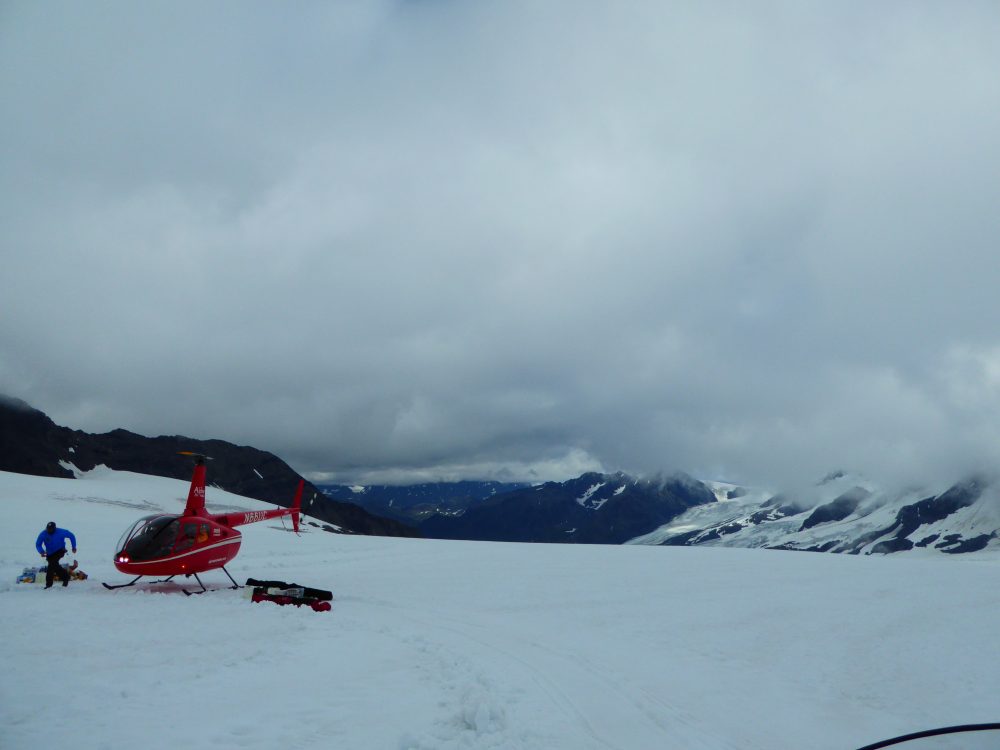
“I thought I was going to be a pilot for a while,” Flora says… but “then realized partway through [the aviation certification process] that that my heart was really in cross-country skiing. So that’s where my coaching began.”
Flora coached the Masters program for Gold 2002 for three years, starting in 1998 at a modest six hours a week. He took over coaching juniors in 2001. Following the Salt Lake City Olympics, Gold 2002 merged with and rebranded as what is now officially known as the Alaska Pacific University Nordic Ski Center, or APUNSC. Flora has been in charge of the APUNSC program since 2006.
This narrative makes it look like the car accident was what set Flora on the path to coaching. That’s not inaccurate. But there are two other things that Flora mentions first when asked about life events that pushed him into coaching.
First, he cited the influences of his childhood: “I grew up in a very active, supportive family that cross-country skied a lot. And that definitely set the lifestyle of wanting to spend my life, you know, ski racing and working with athletes, being in the ski world.”
And second was his year abroad in Norway after high school: “Probably the next significant experience was going to school in Norway for a year, and being 19 years old or so, and kind of realized that – I went over and kind of saw how the Norwegians trained, and had this feeling like, ‘I can do this.’ So having that belief pretty young, certainly – ‘I’ve been racing with some of the top kids in Norway, this is something I can do.’”
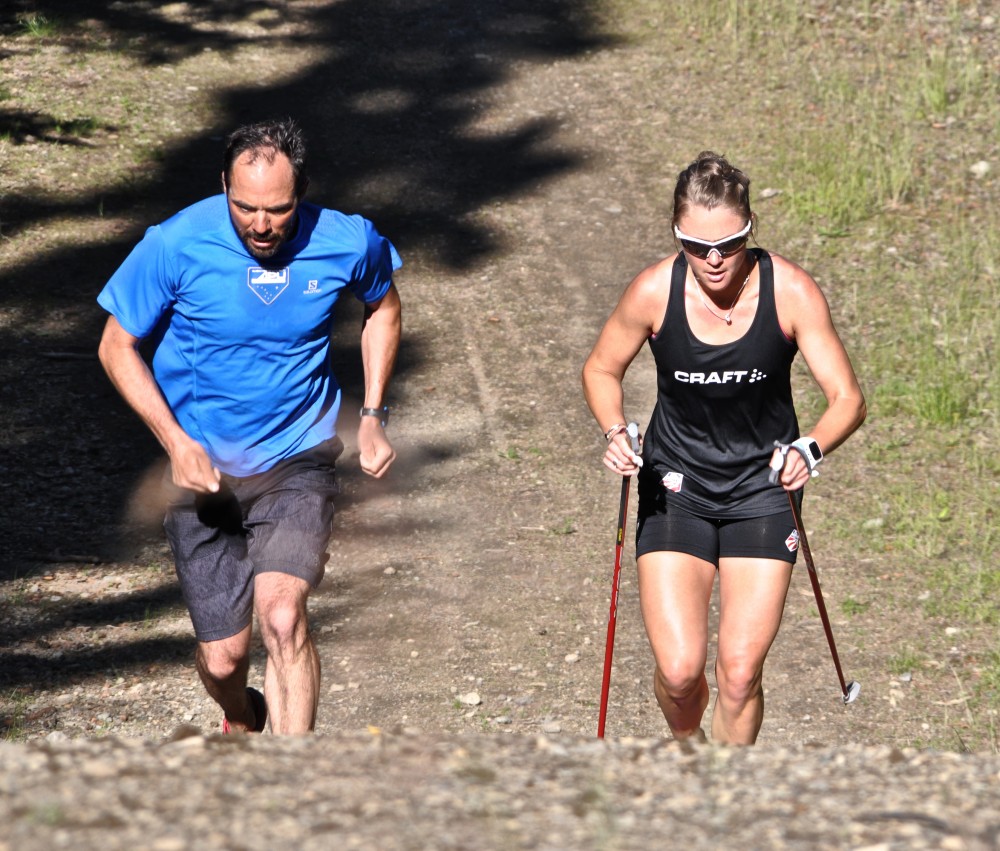
Flora kept this experience in mind when he began coaching. But he changed his outlook from “I can do this” to “we can do this.” Part of this was the general shift from athlete to coach. And part of it was specifically watching the success of his former Norwegian training partners a decade down the line.
As Flora says, “watching a friend of mine get an Olympic gold medal, that I had trained with when I was younger,” had an effect. It made him “take that same … idea when I started coaching, the approach of, ‘Hey, we have a lot of talented skiers, we can certainly do this. The United States can be one of the top nordic countries.’ And then really believing in it.”
(While the famously circumspect Flora did not mention the friend by name in this interview, it has been elsewhere reported that the friend was Norwegian Tor Arne Hetland, who won the first-ever men’s sprint Olympic gold in Salt Lake City. “You know it’s possible for someone to win a medal,” Flora told Alaska Public Media when discussing Hetland in a 2014 interview. “But you’ve never seen it, you’ve never had breakfast with them. They don’t seem like they’re human. Being friends first with this athlete… and then all of the sudden he wins a gold medal. It’s like, ‘wait a second, I can do that.’”)
The parallels to The Kikkan Effect are strong: As the theory goes, Randall’s breakthrough World Cup success inspired the current generation of American skiers to greater heights, largely by showing athletes what someone just like them was capable of. Just so, Hetland’s Olympic success inspired Flora to seek these same heights in America, just a few years before he took over the APU program and became Randall’s personal coach. If this theory is correct, then that year abroad in Norway ca. 1993 had some pretty far-reaching influences.
The Kikkan Effect and APU’s success
So let’s talk about Randall for a second. (Full disclosure, the author grew up doing Anchorage youth sports in the same generation as Randall, and, like many others of that generation, literally had a poster of her on his bedroom wall. His older daughter now has a signed picture of Randall in her room.)
As previously profiled many times (for example, in this FasterSkier piece from 2012 called “The Kikkan Effect,” then later in this Outside Online piece from 2017 called “The Kikkan Effect”), Randall broke down barriers and achieved unprecedented success for American skiers, raising her countrywomen up along with her.
Flora is chary of divulging too much about training plans, but some inklings of his work with Randall can be gleaned from the Outside Online version of The Kikkan Effect. Here are a couple paragraphs from that article:
“By 2006, with new APU head coach Erik Flora in place, [Randall] increased her training load even more. ‘By 35 percent,’ says Flora. ‘That put her on par with the Scandinavians.’ In 2008, Flora dialed things up again. ‘The year of intensity,’ Randall calls it. ‘You hadn’t trained hard enough if you hadn’t started crying.’”
At the risk of oversimplifying a lot of complicated science about supercompensation (see also Jason Cork’s arm tattoo if you ever get a chance), the changes seem to have worked. The volume increase of 2006 was followed by the first ever World Cup win for an American woman in 2007. The intensity increase of 2008 gave way to the first ever World Championships medal for an American woman in 2009. There was more to it than that, but the decisions made between coach and athlete seem to have paid off.
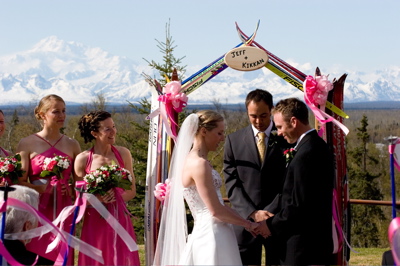
In the middle of this period, Flora officiated at Randall’s wedding to Canadian skier Jeff Ellis in May 2008, standing before an archway formed by superannuated pairs of skis with Denali looming in the background. Flora remains Randall’s personal coach to this day.
Whatever the reason – be it Randall, Flora, greater trends in American skiing, or some combination of the above – the decade-plus since Flora began working with Randall has seen stunning success for the APU program.
By the Ski Tour Canada at the end of the 2015/2016 World Cup season, APUNSC had eight athletes skiing on the World Cup, probably more than from any single other club in the world. (And this doesn’t include Randall, who was out for the season on maternity leave.) Going into the 2017/2018 season, APUNSC claims six of the 16 athletes currently on the U.S. Ski Team A, B, and D teams. (Stratton Mountain School counts another seven.) Oh, and there were the two World Championships medals this February, Randall’s third and Sadie Bjornsen’s first (with Jessie Diggins in the team sprint). Whatever Flora is doing at APU, it seems to be working.
Flora was asked what he is most proud of other than these world-class results. He immediately mentions helping his athletes to develop as people:
“My proudest accomplishment with this team is, you know, the medals and the ski performances I’m very proud of, but just seeing that the athletes I’m working with are having a good development experience, where they’re coming in at a young age and learning about that transitional place in life – where they’re going, how to chase a goal, and the life experience part. We have these outstanding individuals that, in my Elite program, they’re leaving as these exceptional individuals to the community. That’s one of my proudest parts.”
He then mentions the overall success of the broader APU program – but, much as with his athletes, ties this to the personal development of the individuals involved:
“Eagle Glacier, and the Nordic Ski Center, seeing the stability that we have right now, and the reputation as being a world-class elite ski area up on Eagle, and that our training center is one of the top clubs in the world, I’m incredibly proud of what we’ve accomplished. And a lot of that is due to the coaches that have worked for me. And to watch a lot of the coaches that started as either young coaches, or transitioned from athletes into coaches, and to be able to watch them along their journey and find their place where they can also do the same, they can help out and pass along what they’ve learned. Those are my proudest moments.”
And even when the question is rephrased to hone in on results, Flora still evinces a care for the overall level of American skiing:
“From the first time we watched Kikkan step onto the silver medal podium in Liberec in 2009 for World Championships, I’ve always believed that U.S. skiing can compete, it’s a matter of getting the right group together and having the right energy, and working hard toward a goal. And so every time I see one of our athletes on a podium, it just confirms that we’re doing the right thing. And we’re doing it in the right way, you know, we’re doing it in a way where the athlete’s having a good experience.”
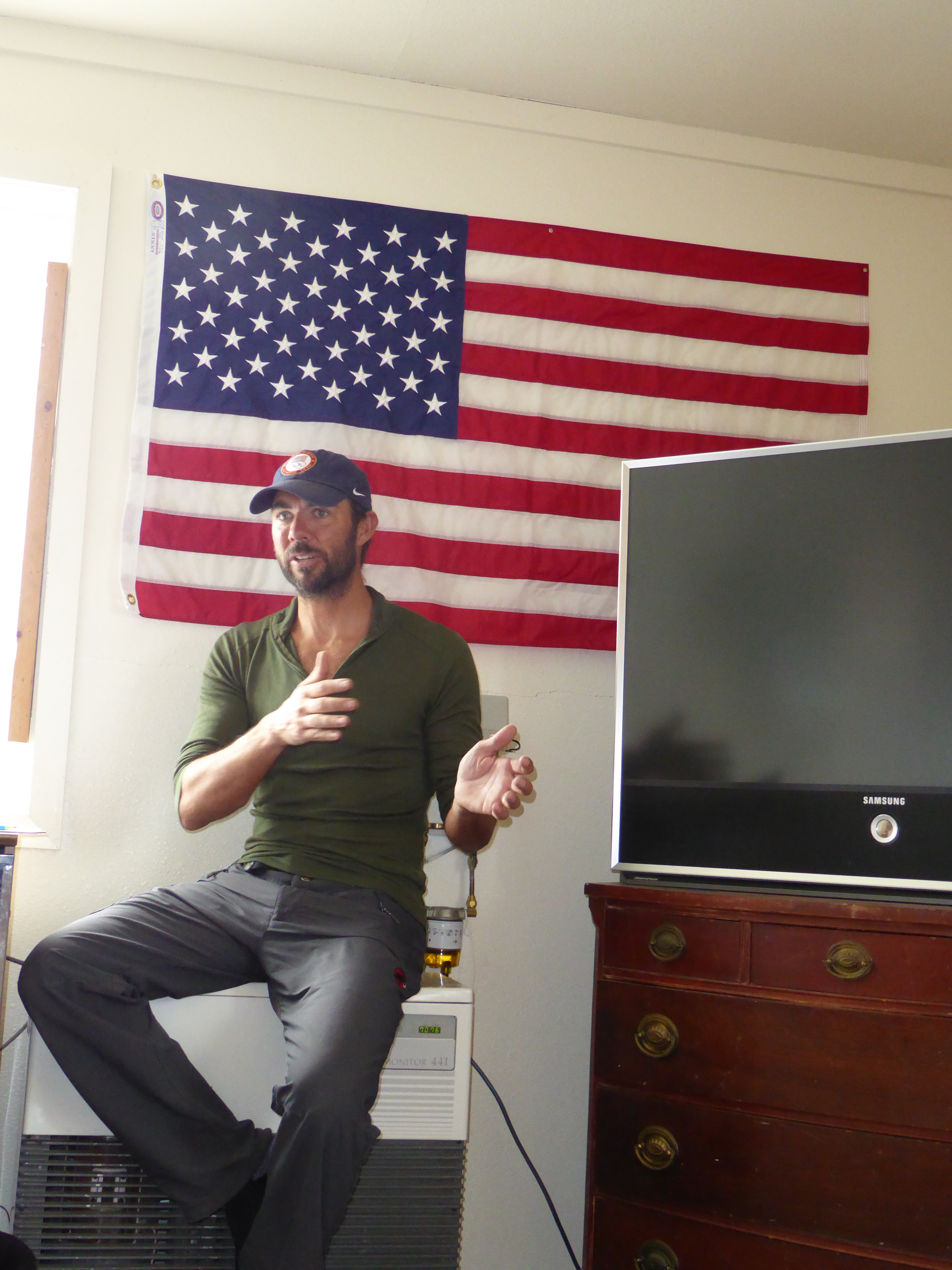
As Flora says, he believes in U.S. skiing. In this vein, it’s a small but telling detail that the flags on display inside the Eagle Glacier training center are American flags. This is a program with “Alaska” in its name, that counts homegrown Alaskans as the majority of its roster. And Alaskans, to engage in a moment of gross understatement, tend to be very proud of Alaska. But the flags are all stars and bars, not eight stars of gold on a field of blue. Flora clearly loves it in Alaska, and has stayed because he believes it is the best place to pursue his goals, but his primary focus remains on international success for the country as a whole.
Coaching philosophy
So what’s the coaching philosophy that Flora uses to help American skiers reach these goals? In a word, it’s all about a cup. In two words, it’s all about a cup and the athletes.
First, the cup. One of Flora’s favorite training images is to suggest that everyone’s life is a cup. [draws diagram on whiteboard with cross-section of a cup] And training fills up this much of your cup, and recovery fills up this much, and preparing and eating food fills up this much, and presumably you’d like to see your friends some, too… and pretty soon, your cup is in danger of overflowing.
It is a helpful metaphor for visualizing overall training and life stress. It is also a frequent training talk trope. Every training camp at Eagle Glacier, from juniors to masters, signs the wall of the training center, often beneath an image in some way symbolizing the camp or evoking an in-joke from the past week. A picture of the cup was chosen for one recent Elite Team glacier camp, suggesting that the cup was frequently discussed.
As Flora now notes, “I began as an elite coach about 10 years ago. And when I started, I had this idea or this plan, that if I wrote a training plan, and it was the correct training plan, that I would have good success with my team and my athletes. And you know, sure enough, I was fortunate enough to have a good experience in coaching, and we had some good successes and that seemed to work. But what I’ve kind of learned to appreciate through the years is that to be a top-level skier, it’s very much a lifestyle. So the more I can help athletes find what the right balance is, the better the program goes, the better success we have.”
Live the lifestyle and find the right balance – you can’t overfill your cup.

And second, the athletes. Flora clearly believes in empowering his athletes to, if not literally coach themselves, at least to take a very active role in the process. As he notes, “I guess if I were to summarize my coaching style, [it would be] as: I believe very much in trying to educate or teach the athletes about training.”
He continues, “And so … when they start from a young athlete, they learn all the different types of training, they get experience training in different ways, and they become the expert over time. And that’s been something I’ve been very proud of. It’s like, the team I have now, I feel very confident that – when it’s their turn to coach, that the experience level of the athletes is quite high. Because through the training process, they’ve, you know, learned ‘what happens when I train too much,’ ‘what happens when I train on the right sequence,’ ‘how do I get faster,’ ‘what are the basics.’ And so I would say that’s a way to sum up my basic philosophy of training.”
Personal life
So what does Flora do when he’s not coaching skiing? Well, he goes skiing for fun.
No, really – Flora can often be seen skiing with his entire family in the offseason, either on the ski trails in spring or in the mountains in summer. These are often family affairs, as three generations – Berit and Sam, the septuagenarian (and still skiing) grandparents; Erik and Gretchen, the parents; and Oskar, Marit, and Ingrid, the children – can be seen hiking up steep trails with skis in backpacks.
And, yes, all three children ski race. They are not bad at it, either; Marit was second among U14 girls, and Oskar first among U10 boys, in last winter’s Besh Cup Series of JO qualifying races.
Despite, or perhaps because of, his day job as a high-level professional ski coach, Erik and Gretchen at a Besh Cup are less Ski Coach than Good Sports Parent. Leave it to the other parents to engage in a postmortem of tactics or wax efficacy following a zero-stakes U12 contest… Erik and Gretchen are the ones who reliably say only, “Good job! Did you have fun? Let’s go get some hot chocolate.”
Presumably that cup is full of hot chocolate. But not too full.
* * *
Disclosure: The author is an unremarkable Masters skier with the APU Masters program. He receives coaching from Erik Flora on one occasion per year, for a few days in a group setting at APU Masters Eagle Glacier Camp, but has no other direct involvement with Flora as an athlete.
Gavin Kentch
Gavin Kentch wrote for FasterSkier from 2016–2022. He has a cat named Marit.
